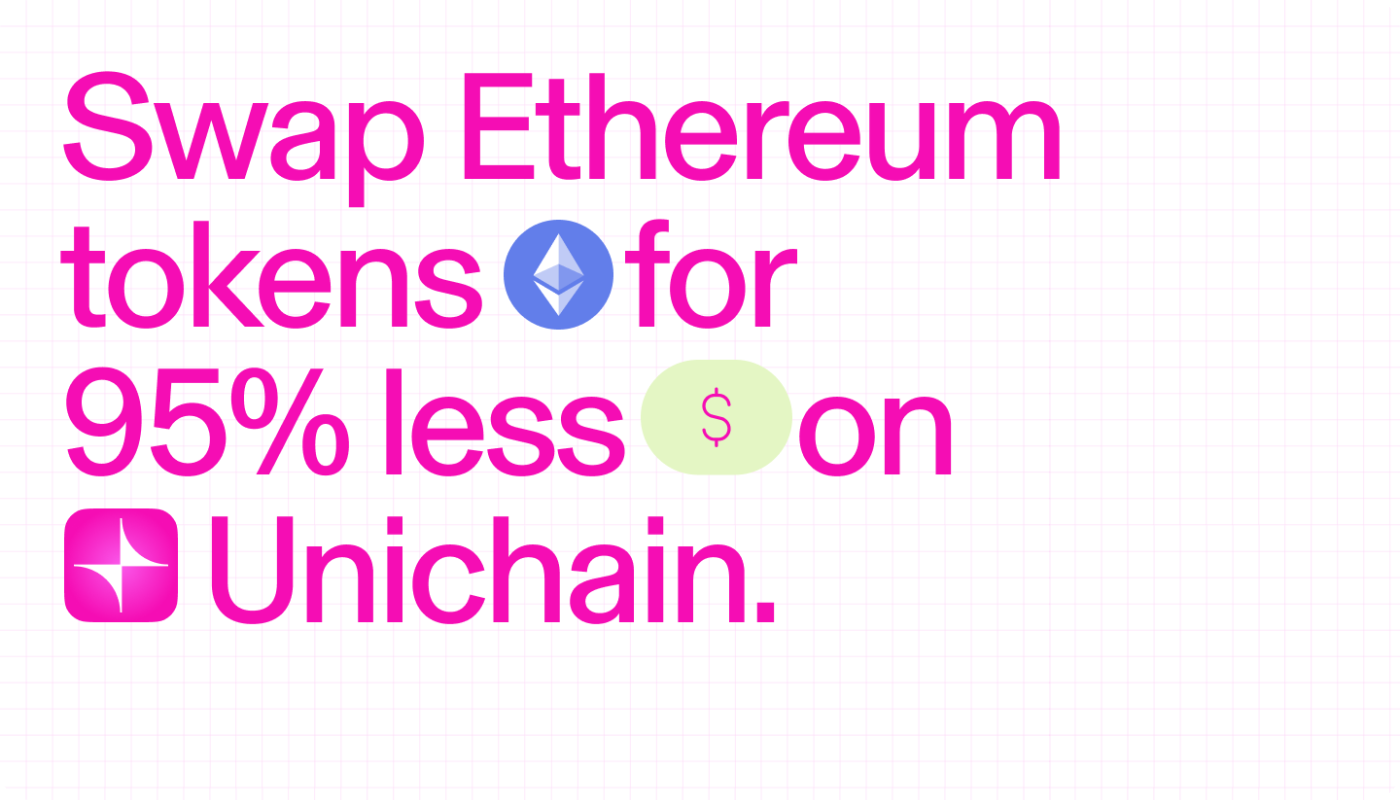Onramping in Private


View in Browser
Sponsor: Uniswap Labs — Unichain is live! Bridge & swap with Uniswap Labs' web app or wallet.

- 🦬 Wyoming Eyes Aug. 20 Launch for WYST Stablecoin. The state’s Stable Token Commission targets a mainnet debut for its fully-backed USD token this summer.
- 👁️ Reddit Considers Worldcoin’s Orb Tech for ID Verification. The social platform is reportedly exploring biometric scanning from the crypto identity project.
- 🪙 Kraken Enables Native BTC Staking via Babylon. The new integration offers up to 1% APY without wrapping or lending, with $BABY token rewards for users in select regions.
| Prices as of 6pm ET | 24hr | 7d |

|
Crypto $3.31T | ↘ 3.5% | ↘ 3.8% |

|
BTC $103,274 | ↘ 0.9% | ↘ 1.8% |

|
ETH $2,410 | ↘ 3.8% | ↘ 4.7% |

The past few days brought another example of the pressing need for privacy — this time the largest cloud hack to date, leaking 16B user credentials from Google, Apple, and Facebook accounts, plus many more.
Given the increasingly interconnected state of the net, where we use one account to set up others, this hack has massive implications on sensitive data, some of which is bound to be financial, stored across this web.
With much of crypto still relying on these services to onboard or even create wallets, it's more important than ever to explore tools actively building to protect against this paradigm.
ZKP2P proves to be one of those tools — a privacy-preserving, trust-minimized on/off ramp protocol that just released its v2 a few months ago, simultaneously smoothing and safeguarding the process of moving funds on and off chain.
What Problem Are They Solving?
As we know firsthand, crypto as a method for digital payments still faces several friction points that keep it from reaching its potential:
- High Fees (Moonpay's minimum fee is $3.99 but up to 4.5% while Transak's $1 + 3.5%)
- Cumbersome KYC Processes (Many services have different levels of KYC which afford different privileges, plus are usually tied to user accounts)
- Limited Asset Support (Onramping services tend to offer only select assets, rather than everything available onchain)
- Inconsistent Availability (Coinbase offers a smooth way to move onchain, though it's still only available in select jurisdictions)
By matching people who want to onramp (buyers) with people who want to offramp to fiat (sellers), ZKP2P tackles these problems. In V1, the protocol worked by having sellers place orders and lock $USDC liquidity in smart contract escrow, then having buyers generate a proof showing they've sent payment to sellers on Venmo — unlocking the funds atomically.
What’s New in the V2
V2 retains the same buyer/seller core functionality, but now uses zkTLS, an increasingly popular technology used to move data, safely and securely, from regular websites onchain without showing any private details, to match these offchain/onchain parties.
This matching enables users to onramp and offramp any ERC20 token across Base, Polygon, Ethereum, and Solana using a wider range of payment providers and methods of proving payment (API responses, receipts, in addition to the original email confirmations).
Further, V2 introduced "offchain relayers" that come with different services and terms based on the one chosen. The default ZKP2P relayer abstracts gas and wallet signing, gates liquidity, and coordinates proof generation. But other relayers could collect additional KYC for large amounts, support specific payment services, or serve particular user groups.
Overall, V2 builds on the original ZKP2P application, enhancing its features and expanding it to include developer infrastructure that different applications can integrate with.
If I must prove receipt, how private is ZKP2P?
ZKp2p achieves privacy not by hiding that a payment occurred, but by proving it happened without revealing unnecessary personal information.
Instead of traditional KYC processes, ZKP2P users generate cryptographic proofs showing a payment occurred and that they own the paying account. Proofs are generated locally and include only what's needed for verification from that specific provider, like transaction ID, date, currency, amount, and recipient. (You can see the data each provider requires in ZKP2P’s GitHub).
These proofs aren't stored anywhere. All data stays in the browser during the session and gets discarded afterward — both transaction metadata and authentication data used for proof generation.
This functions through a browser extension called PeerAuth which uses zkTLS to fetch data from the Web2 payment providers like Venmo or Wise and generates proofs without popups or extra steps, only revealing to the protocol what's needed for the transfer. Nothing else.
The entire zkTLS flow is open source, and users can inspect browser network activity to verify no private data leaks.
How to Onramp via ZKP2P
For buyers looking to onramp:
1. Visit zkp2p.xyz and Connect Your Wallet — Supports a wide swath of wallets for you to connect with via “Log In” in the top-right corner. After you’ve done that, move to the Buy tab in the main navigation bar.
2. Configure and Start Your Order — Choose your currency and payment method, enter the amount to send, review available orders and rates, then "Start [your] Order" and sign the transaction.
3. Install PeerAuth — First-time users will be prompted to install the PeerAuth Chrome extension that helps verify payments. You'll see an "Install PeerAuth Extension" screen — click Add to Chrome. (While installing an extension in crypto usually feels risky, the doxxed founders and Ethereum Foundation support for ZKP2P make me more comfortable doing so.)
6. Make and confirm your payment — After installing, go back to the previous ZKP2P page where you'll see a QR code or payment instructions. Send the exact amount to the specified recipient through your chosen payment provider. Return to ZKp2p and click "I have completed payment."
7. Complete verification and receive $USDC — You'll be redirected to log into your chosen payment provider, where PeerAuth will access the page and automatically redirect you back. Select the correct payment from your recent transactions, click Verify Payment, and wait about 30 seconds for the zero-knowledge proof generation. Once verified, click "Complete Order," sign the transaction, and receive your $USDC.
If you run into issues, their docs and Telegram provide support.
- Also, if you want to use ZKP2P as a seller, you can follow this guide here to get started.
Overall, ZKP2P delivers a genuinely smooth flow that moves much faster than other onramp services. Fees prove substantially lower than services like Moonpay or Transak, though can creep up as amounts get larger. (Solution here is to just onboard in increments.)
I've had transactions where I paid the exact rate, granted for small amounts like $5, meaning I could onramp USD with Venmo for zero cost — really incredible. Given that most transactions still have a slight fee, ZKP2P has a gap to bridge to be more competitive with options like Coinbase which, particularly for Base and $USDC, provide highly competitive rates if you're in allowed jurisdictions.
But that hasn't stopped the protocol from continuing to grow in popularity, with usage steadily climbing as it makes meaningful steps toward the kind of seamless, private crypto payments the space has been promising for years.

Unlock the power of Unichain – a fast, decentralized Ethereum Layer 2 network built to be the home for DeFi and cross-chain liquidity. To bridge tokens to Unichain and start swapping today, get started with Uniswap Labs’ web app or mobile wallet.